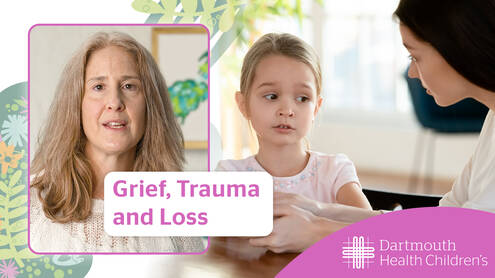
The numbers are startling.
The CDC reports that 1 in 36 U.S. children now have Autism Spectrum Disorder (ASD). The rate among adults is slightly lower at 1 in 45.
Observers suggest numbers may rise still.
"There is a researcher at Université de Montréal who says that if diagnoses get much higher, let's just say ASD is a universal diagnosis," says Nina Sand-Loud, MD, Developmental and Behavioral Pediatrician at Dartmouth Health Children's.
There are upsides to the increase in diagnoses
One is greater awareness.
William Hudenko, PhD, Adjunct Assistant Professor at the Department of Psychiatry at Dartmouth's Geisel School of Medicine, says the popularization of ASD in the media reflects its growing acceptance.
Hudenko points to television shows and Netflix series with lead characters who present with ASD.
"The Big Bang Theory," "Atypical," and "Love on the Spectrum" are three that come to his mind. "All have characters who express some of the complex experiences of ASD, and we enjoy and relate to them," he says.
Social media also is playing its part in reducing the stigma associated with ASD, particularly among teens and young adults, says Section Chief, Child and Adolescent Psychiatry at Dartmouth Health Children's, Jennifer McLaren, MD, DFAACAP.
"Youth are feeling less stigma in terms of mental health diagnoses," she says.
They are also more willing to explore what having ASD means.
Influencer Paige Layla, author of the bestselling book But Everyone Feels This Way; How an Autism Diagnosis Saved My Life, has more than 2.5 million TikTok followers.
Earlier this year, Tallulah Willis, the 30-year-old daughter of Demi Moore and Bruce Willis, opened up about her autism diagnosis, sharing a video on Instagram of her as a young child playing with her father's ear as he speaks to reporters.
"Tell me your [sic] autistic without telling me your [sic] autistic," Willis captioned the post.
Subscribe to the Living Better newsletter
Your trusted resource for reliable and up-to-date health and wellness information in the Northeast. Get it delivered to your inbox every other week.
Defining ASD has challenges
To be on the autism spectrum, a person must have persistent deficits in at least three areas of social communication and interaction, plus at least two of four types of restrictive, repetitive behaviors like hand-flapping or intense focus on a specific interest.
Complicating an already complex diagnosis is the American Psychological Association's (APA's) decision in 2013 to remove the less profound Asperger's from the Diagnostic and Statistical Manual of Mental Disorders and fold it into the new term, Autism Spectrum Disorder.
One effect of that APA decision is that people on the edge of the spectrum are in the same group as those who struggle with profound challenges like being non-verbal.
"They were trying to make it clearer, and I think, in their attempts to make it clearer, they made it less clear, which sometimes happens," says Sand-Loud.
McLaren says she now sees parents who believe their child is on the spectrum only to learn they actually have ADHD (attention-deficit/hyperactivity disorder).
Hudenko notes that children who are very intelligent can be mistakenly perceived to have ASD.
A downside to the rise in diagnoses among children
"Things have become very challenging because of the numbers seeking out evaluations," says Sand-Loud, referring to the many parents who are worried their child may have ASD.
She recommends concerned parents begin not by assuming their child has ASD but by identifying and getting support for their child's specific challenges through school or an early intervention program while waiting for a full evaluation.
"We don't want a two-and-a-half-year-old waiting six months to see me before they get services. That's wasting valuable time," she says, noting the importance of early intervention when the brain is most malleable and still developing.
Those diagnosed as adults often have milder symptoms
Given the awareness of mental health challenges among young adults, it is perhaps no surprise the greatest increase in adult ASD diagnoses is between the ages of 25 to 34 and those who have milder symptoms.
If you suspect you might have ASD and it is impacting how you function in the world, McLaren recommends raising your concerns with your provider first.
If you are concerned that a loved one is struggling and would benefit from talking to their provider, base your conversation on what you observe, not on your assumption they have ASD.
Remember, too, in your interactions, that your learned social script might not be theirs.
Not everyone will welcome an ASD diagnosis
"It can make you feel as if you have been put into a box that you don't want to be in," says a 32-year-old woman from White River Junction, Vermont.
One mother of a 33-year-old son who lives in a nearby Vermont town says her son was diagnosed with Asperger's in elementary school but still refuses to consider himself on the spectrum.
"He wants nothing to do with it," she says.
If you accept your ASD diagnosis
Psychologists say sharing can help people better understand you.
ASD may mean not making eye contact, which makes some people uncomfortable. "But if you say the reason is 'I have ASD,' now that person does not feel the same negative social impact," says Hudenko.
McLaren recommends letting people know in your workplace, too. If they don't respond well, that employer may not be right for you.
When the woman from White River Junction told her husband her diagnosis, he said, "That makes a lot of sense, actually."
What would she tell adults with ASD symptoms?
"It's not as scary as you think. A diagnosis gives clarity you've never had into who and why you are the way you are."


